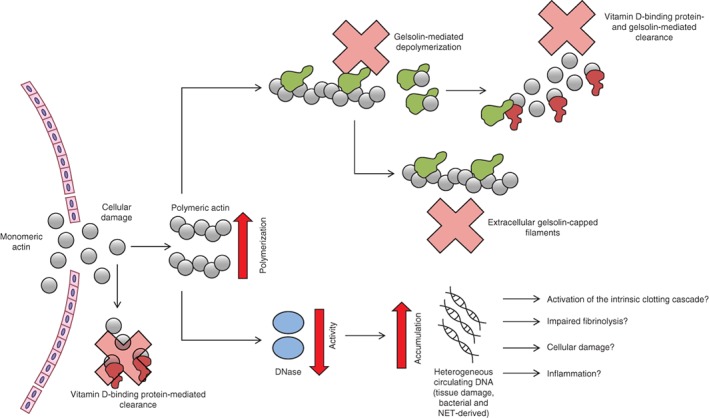Figure 5.

Hypothesis model suggesting how severe thermal injury results in disruption of the actin scavenging system which predisposes to DNase activity inhibition and accumulation of cell‐free DNA Following severe thermal injury, polymerized and monomeric actin is released, which immediately reduces vitamin D‐binding protein and gelsolin levels. The polymerized actin can then bind to DNase and inhibit its activity. Injury‐ and immune cell‐derived DNA can accumulate and potentially cause activation of the intrinsic clotting cascade, impaired fibrinolysis, bind to platelets, and cause cellular damage and/or inflammation. NET, neutrophil extracellular trap.
